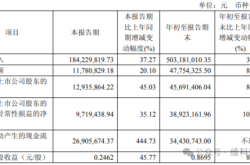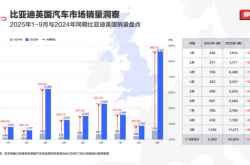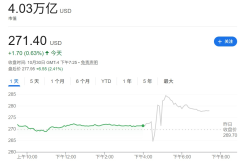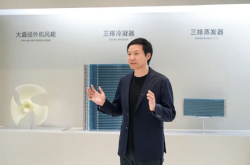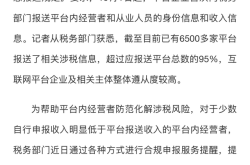Revisiting a Decade Ago: The Mobile Phone Market's Thrilling Saga
![]() 05/12 2025
05/12 2025
![]() 655
655
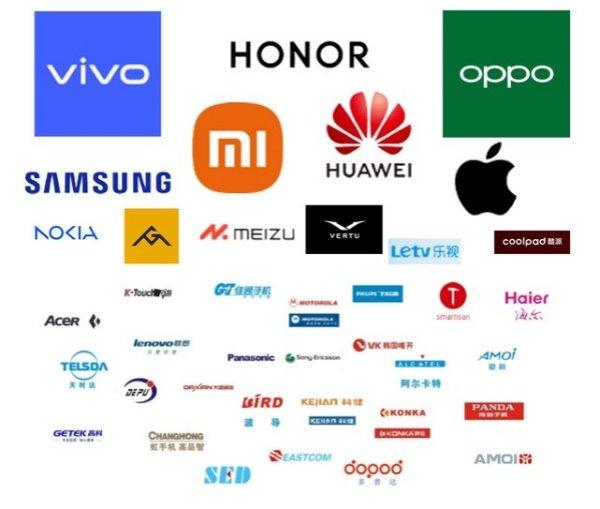
In 2025, the mobile phone industry continues to buzz with fierce competition, with the top five domestic giants locked in a relentless battle while other players strive to make headway. However, the market's finite size ensures that one player's gain is another's loss. Casting our minds back a decade, to 2015, reveals an even more crowded and competitive landscape, filled with numerous highlights.
That year, Xiaomi, buoyed by its rapid ascent to the top of the domestic market in 2014, boldly set an annual shipment target of 80 to 100 million units, marking a 50% increase from the previous year. Unfortunately, issues with quality and delivery hindered Xiaomi from reaching this ambitious goal, marking its first significant setback in over five years of operation.
While this setback was an embarrassment for Lei Jun, it was not without its benefits. In November 2015, at the Redmi Note 3 launch event, Lei Jun publicly acknowledged that Xiaomi's mindset had become skewed, overly focused on defending its title. He reiterated Xiaomi's original mission: to diligently create heartfelt products, day in and day out. "We must let go of our obsessions and focus on making quality products. It's not worth obsessing over competitors every day." From then on, crafting sincere products at reasonable prices became Xiaomi's long-term product philosophy, as it embarked on a journey of catching up, aiming to build momentum for future growth.
OPPO, too, made concerted efforts on both product and marketing fronts that year. The success of the R7 series marked the rise of the R series, which would later become a cornerstone of OPPO's sales. The slogan "Charge for five minutes, talk for two hours" gained widespread recognition, accurately addressing user pain points. Simultaneously, OPPO's entertainment marketing gained traction, rapidly increasing brand awareness and translating it into substantial sales.
Huawei and vivo, on the other hand, developed steadily without being overly aggressive. Huawei launched the P8 and Mate8, while vivo introduced the X5 Pro and X6 series. Notably, vivo, amidst an industry fraught with mudslinging and PR wars, emerged as a breath of fresh air, focused solely on executing its tasks well. Time has proven that every step counts, and the perseverance of that era laid a solid foundation for future successes. Today, the Mate series and X series are their respective aces in the high-end market.
In 2015, Meizu, freshly infused with a $590 million investment from Alibaba, embarked on an aggressive expansion path. The Meizu and Meiblan brands continuously launched new products, swelling the workforce to 4,000 employees. Annual sales approached 20 million units, with first-half sales reaching 8.7 million units, a staggering 540% year-on-year increase. Sales in August alone hit 2.89 million units. This marked the beginning of Meizu's three-year peak (2015-2017), solidifying its position as a significant player in the mobile phone industry.
That year also saw the resignation of Liu Jiangfeng, who had led Honor for just over a year. A pivotal figure in Honor's early days, he grew sales from $100 million to over $2 billion within a year. His successor, Zhao Ming, did not disappoint, guiding Honor to become a star in the internet mobile phone industry. In October, Honor achieved its annual sales target of $5 billion, completing the full-year KPI two months ahead of schedule. Zhao Ming's performance earned him an enviable A rating, a testament to his commendable efforts.
Lenovo's mobile business group also underwent a leadership change that year, with "firefighter" Chen Xudong replacing Liu Jun. When asked about the reason for the change, Lenovo's CEO Yang Yuanqing was blunt: "Last year, I even said that you couldn't be woken up even if you hit you with a hammer. You were too slow and missed opportunities." Recognizing the obsolescence of the operator cooperation model in the internet era, Lenovo Mobile desperately needed change. Chen Xudong, upon taking over, implemented drastic reforms, including cutting nearly half of the product models and launching the internet brand ZUK. However, these efforts failed to reverse the declining trend.
Smartisan, under Luo Yonghao, also faced numerous challenges that year. Following issues with the T1's quality control, production capacity, and price cuts, the T2 was highly anticipated. However, on the eve of its launch, Zhongtianxin Electronics, Smartisan's OEM factory, suddenly went bankrupt. Fortunately, a new OEM factory was secured in time, allowing the T2 to be launched and face market tests. Unfortunately, sales were underwhelming, though higher than the T1, they fell short of mainstream players, exacerbating Smartisan's difficulties.
Amidst this competitive landscape, Dong Mingzhu, an outsider to the industry, showed no fear due to her ignorance. At the beginning of the year, she boldly declared that "Gree will destroy Xiaomi in the mobile phone market in no time." A few months later, she revised her target, stating that selling 50 million Gree mobile phones in the future should not be a problem. However, she soon changed her tune again, acknowledging that selling 50 million units within a year seemed unrealistic. As we all know, the sales and revenue of Gree mobile phones have always been shrouded in mystery. Not only did it fail to eclipse Xiaomi, but its presence in the mobile phone market dwindled.
Letv also made a high-profile entry into the mobile phone market that year. In contrast to Dong Mingzhu's boastful style, Jia Yueting took a different approach. He unprecedentedly revealed the BOM cost of the mobile phone at the launch event, sparking significant controversy. Leveraging a hardware negative profit strategy, sales surpassed 1 million units in just three months. However, this aggressive expansion strategy imposed immense financial pressure on Letv and its entire ecosystem, leading to massive arrears in supplier payments. Letv mobile phones' fleeting prosperity has since given way to dire straits, ultimately dragging down the entire Letv ecosystem a year later.
Yang Zhe, who previously oversaw the marketing of Huawei's P7 and Mate 7, left Huawei at the end of October 2015 and joined TCL Communication two months later as the President of the China region. Upon taking office, he introduced the brand concept of "Just Like Life," marking the beginning of TCL's mobile phone brand transformation. However, TCL is not Huawei, and Yang Zhe's strategy for expanding Huawei into the high-end market was not applicable to TCL, leading to TCL's continuous retreat in the mobile phone market. He subsequently joined Meizu and Xiaomi but failed to make a significant impact.
In 2015, sub-brands like Red Magic, realme, and iQOO were yet to be established, Honor had not separated from Huawei, and Redmi was still a product series rather than a standalone brand. Nubia, on the other hand, separated from ZTE and embarked on its solo journey, proposing an ambitious "three-step strategy" to fully develop sports marketing and expand overseas. Following the immense success of the OnePlus One, OnePlus launched the OnePlus 2 and OnePlus X but unexpectedly hit a development bottleneck. This prompted Liu Zuohu's profound reflection and OnePlus's comprehensive transformation.
Looking back, 2015 was a pivotal year for domestic mobile phones, marking their full rise to prominence. The market shifted from incremental growth to saturation, intensifying competition. Each player found itself in a unique situation. A decade later, the mobile phone landscape has undergone tremendous changes. Xiaomi, Huawei, OPPO, and vivo remain at the forefront, while Meizu and Nubia strive to climb up the ladder. Lenovo has been nearly marginalized, and Letv, Smartisan, and Gionee have all but disappeared. Gree has also pressed pause on its mobile phone ventures.
The fate of mobile phone manufacturers directly influences the careers of their executives. Many have left, few have stayed, and even fewer have been promoted. Yu Chengdong and Lei Jun are simultaneously involved in both the mobile phone and automotive industries. Lu Weibing, He Gang, and Ni Fei have seen steady career progression. Wang Teng, Xu Qi, Li Jie, and Cheng Gang are up-and-coming young talents. Liu Jiangfeng, Chen Xudong, Shen Yiren, Chang Cheng, Jia Yueting, Yang Zhe, Zhou Hongyi, and Luo Yuzhou have all left the stage in disappointment. Zhao Ming has been unemployed for four months, and his next destination remains uncertain...
Reflecting on the past decade, it has been a whirlwind of full-throttle competition, ups and downs, and thrilling developments in the mobile phone industry. The ever-evolving market continues to unfold captivating sagas, deserving of our shared anticipation. As we look ahead to the next decade, only time will reveal who will emerge as the dominant player. Let's wait and see!

